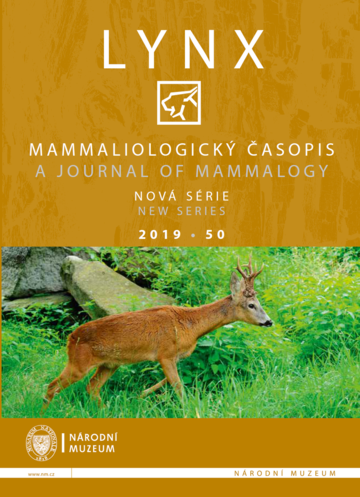On the bat fauna of the Bahrain Archipelago (Chiroptera) [K fauně netopýrů Souostroví bahrajnského (Chiroptera)]
Benda Petr, Uhrin Marcel
Only thirteen records of four bat species belonging to three families have been known from the Bahrain Archipelago until now, Asellia tridens, Taphozous nudiventris, Pipistrellus kuhlii, and Vansonia rueppellii. Here the results of a short-time systematic survey of bats in Bahrain are presented.…

